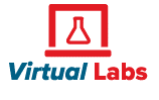Connect Virtual Labs
Connect Virtual Labs is a fully online lab solution that can be used to replace, prepare, supplement, or make-up labs to bridge the gap between lab and lecture. These lab simulations help students learn the practical and conceptual skills needed to succeed in lab environments, whilst also checking their comprehension and providing instant feedback. With adaptive pre-lab and post-lab assessment available, instructors can personalise each assignment.
Which format of course material would you prefer?
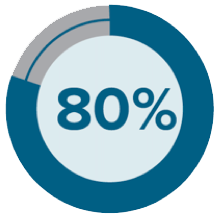
Said Virtual Labs!
“I am able to complete at my own pace and not feel rushed or left behind. If needed, I can repeat something to better understand.”
Did Connect Virtual Labs create the in-person lab experience?
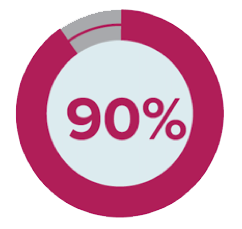
Said Yes!
“Questions throughout kept me engaged and ensured I understood what was going on. The immediate feedback allowed me to learn, adjust, and reroute.”
Connect Virtual Labs Content
Want to enhance your course with Virtual Labs?
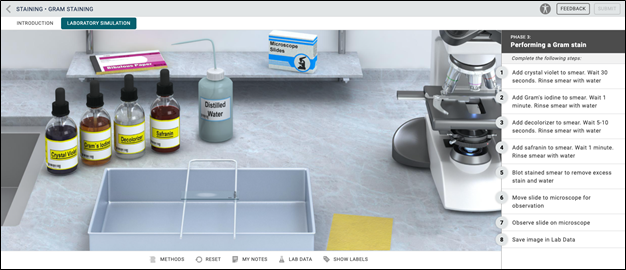
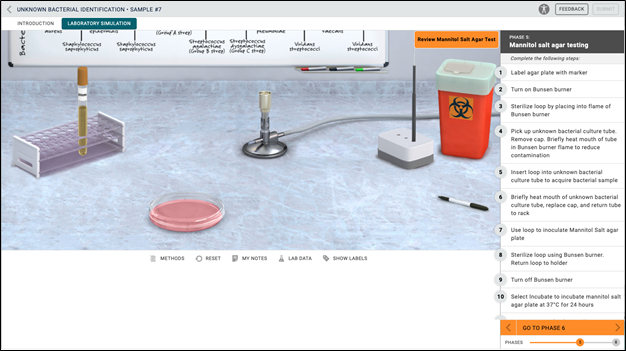

1st Lab Tutorial:
- Virtual Labs Tutorial
Applying the Scientific Method:
- Pillbug Preference
Aseptic Technique:
- Ubiquity of Microorganisms: Sampling Surfaces for Bacteria
- Transfer from Broth to Broth
- Transfer from Broth to Slant
- Transfer from Broth to Agar Plate
Bacterial Genetics:
- DNA Profiling
- PCR
- Bacterial Transformation
Blood:
- Differential White Blood Cell Count
- Hematocrit
- Hemoglobin Content
- Blood Typing
Cardiovascular Physiology:
- Pulse Rate
- Blood Pressure
- Electrocardiography
- Heart Auscultation
Cell Division
- Examining Meiosis
- Examining Mitosis
Cell Structure
- Examining Plant & Animal Cells
Cellular Respiration:
- Yeast Fermentation
- Measuring Energy Production in Plants
Chemical Composition of Cells:
- Test for Starch
- Test for Sugars
- Digestion of Starch
- Emulsification of Lipids
- Test for Fat
- Test for Proteins
Control of Microbial Growth:
- Effect of Ultraviolet Light
- Antiseptics/Disinfectants
- Antimicrobial Sensitivity Testing: Kirby-Bauer
Diffusion:
- Effect of Concentration on the Rate of Diffusion in a Semisolid
- Effect of Density of Media on the Rate of Diffusion
- Effect of Molecular Weight on the Rate of Diffusion in Air
- Diffusion Across a Selectively Permeable Membrane
Digestive System:
- Enzymes & Digestion
DNA Biology and Technology:
- Isolation of DNA
- Gel Electrophoresis
- *DNA/RNA Structure
Electromyography:
- Motor Unit Recruitment
- Time to Fatigue
Endocrine System:
- Influence of Thyroid Hormone on Temperature Regulation
- Effects of Blood Glucose Level
Evidence of Evolution:
- Molecular Evidence
- *Evidence of Comparative Anatomy
Eye and Vision:
- Eye Dissection
- Accommodation of the Lens
- Astigmatism Test
- Blind Spot Demonstration
- Color Vision Test
- Convergence Reflex Test
- Pupillary Reflex Test
- Visual Acuity Test
How Enzymes Function:
- Effect of Temperature
- Enzyme Activity
- Effect of pH
- Effect of Concentration
Human Genetics:
- Chromosomal Inheritance During Meiosis
- Genetic Inheritance
Isolation Methods:
- Quadrant Streak Plate Method
- Pour-Plating Method
- Subculturing of Bacteria
- Quantitative Dilution of Bacteria
- Quantification by Colony Counting
- Optical Density
Lab Safety:
- Hand Washing Procedure
- Personal Safety
Mendelian Genetics:
- Monohybrid Plant Cross
- Fruit Fly Characteristics
- Monohybrid Fruit Fly Cross
- Dihybrid Plant Cross
- Dihybrid Fruit Fly Cross
- X-Linked Fruit Fly Cross
Metric Measurement:
- Length
- Weight
- Volume
- Temperature
Microbial Growth:
- Oxygen Requirements & Anaerobic Jar
- Effects of Osmotic Pressure
- Effects of Temperature
- Oxygen Requirements & FTM Tubes
- Effects of pH
Microscopy:
- Operation of a Brightfield Microscope
- Oil Immersion
- Pond Water Wet Mount
- *Plant Cells
- *Animal Cells
- *Diversity of Microorganisms
- *Epithelial Tissue Histology
- *Connective Tissue Histology
- *Muscle Tissue Histology
- *Nervous Tissue Histology
- *Euglena Wet Mount
Natural Selection:
- Antibiotic-Resistant Bacteria
- Natural Selection in Insects
Nervous System:
- Demonstrate Monosynaptic Reflexes
Osmosis:
- Movement of Water Across a Selectively Permeable Membrane
- Tonicity in Red Blood Cells
- Tonicity in Elodea Cells
- Tonicity in Potato Strips
pH Balance:
- Function of Buffers
- Antacids as Buffers
Photosynthesis:
- Photosynthetic Pigments
- Comparing Green and Blue Light
- Determining Rate in White Light
- Monitoring Photosynthesis with Carbon Dioxide Uptake
Respiratory System:
- Mechanism of Breathing
- Pulmonary Function Tests
Sampling Ecosystems:
- Biological Sampling
- Comparing Ecosystems
Skeletal Muscle:
- Shoulder & Elbow Movement Exercise
- Electrical Stimulation
Staining:
- Smear Preparation
- Gram Staining
- Acid-Fast Staining
- Capsule Staining
- Spore Staining
Unknown Bacterial Identification:
- Samples 1-10
Urinary System:
- Urinalysis
Does my course have Connect Virtual Labs?
Below are the purchase options for Virtual Labs, which vary by course. See below to learn more.
Connect Virtual Labs Standalone Options
Life Sciences:
- Anatomy & Physiology
- Biology
- Microbiology
*Each offering includes the same list of labs with added course-specific assignment types.
Chemistry (see full list of labs here)
Connect Virtual Labs included within McGraw Hill textbook
- Anatomy & Physiology Biology (Majors)
- Biology (Non-majors)
- Environmental Science
- Genetics Human Biology
- Medical Assisting
- Microbiology
*Virtual Labs included at no additional cost.
Classroom Best Practices
Connect Virtual Labs Webinar: Moving your Labs Class Online with Confidence
During this session we heard from instructors that have used Connect Virtual Labs in their classrooms, and how keeping the lab ‘open’ they have successfully kept their students progression in their course on track.
How can labs be delivered online?
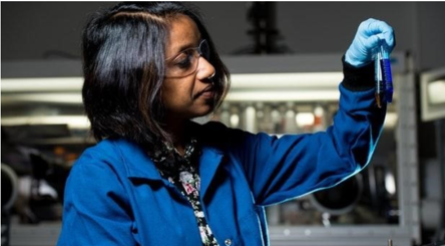
We talk about how you can incorporate Connect Virtual Labs within your additional class materials- like pre-recorded or live lectures to design a full course with ease.
Talk to us about our solutions

